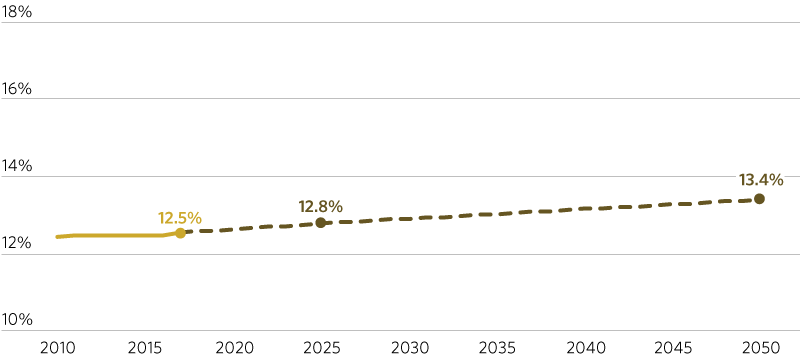Indicator
Employment in STEM Occupations
This indicator tracks employment in science, technology, engineering, and mathematics (STEM) fields in the seven-county Chicago region. The demands of many professions are becoming increasingly complex as technology drives innovation and growth in today's economy. Workers employed in STEM occupations play a significant role in fostering new ideas that lead to economic growth. Yet, growth in STEM occupations in the Chicago region has lagged behind STEM growth in peer regions.
Targets
The Chicago region experienced a 0.12 percentage point increase in the share of STEM occupations between 2010 and 2017. Despite the Chicago region’s diverse industry mix and exceptional education and research institutions, regional STEM employment closely mirrors that of the U.S. overall. In 2017, 12.5 percent of workers in the Chicago region filled positions in STEM occupations, compared with 12.7 percent nationwide. However, regional STEM employment lags behind other peer metropolitan areas, such as Boston, New York, and Washington, D.C. Over the past seven years, the share of STEM employment in the Chicago region grew by an average of 0.017 percentage points annually. Targets are based on the goal to double the region’s annual growth rate to 0.034 percentage points per year through 2025, and then to maintain robust STEM activity by matching the U.S. annual growth rate of 0.024 percentage points per year.
2025: 12.8 percent or more of region’s jobs in STEM occupations
2050: 13.4 percent or more of region’s jobs in STEM occupations
Sections
- Actual
- Target

GO TO 2040 Context
This indicator was revised substantially from the GO TO 2040 Plan Update, which defined private sector employment in research and development (R&D) as the number of workers employed in the Scientific R&D Services industry (NAICS classification 5417). Subsequent analysis found that Scientific R&D Services employment failed to capture numerous innovative segments of the economy. While white-collar, advanced science and technology jobs represent a core component of the region’s innovative capacity, the need for STEM skills appears in many other industries and occupations as well, including many blue-collar jobs. This expanded scope is reflected in ON TO 2050, and this indicator will more accurately track employment in a wider array of STEM fields.